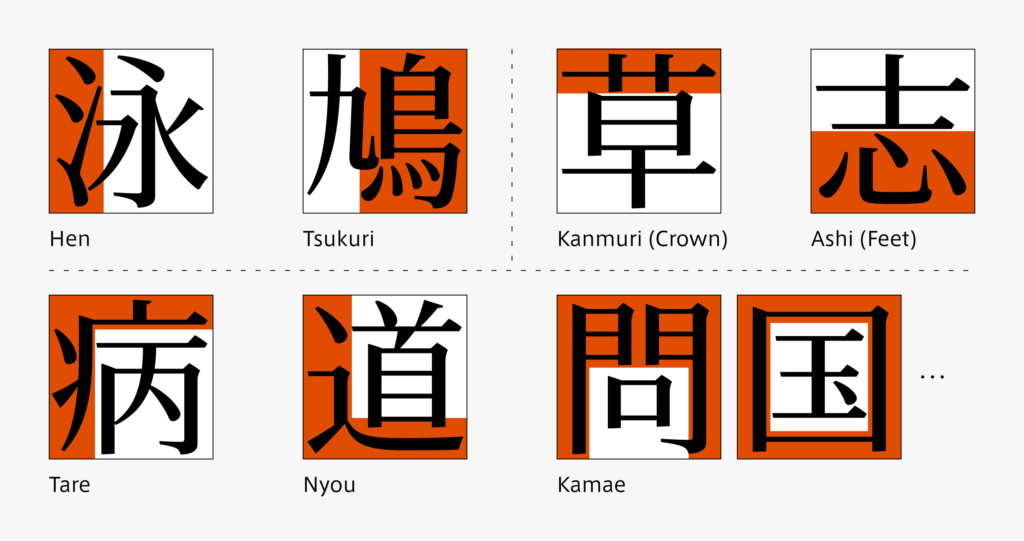Kanji can be grouped by radical. Radicals are a part of kanji. For example, “焼, 炊, and 炒” are all kanji with a common radical. This radical is “火” when it is written alone. As the part on the left of kanji is “hen,” it is called “hi-hen (火偏).” When a kanji is hi-hen, it often means something related to fire. We become very familiar with radicals when learning or using kanji. As we can look up an unreadable kanji by radical, kanji culture is supported by radicals in a variety of situations.

In the next entry, I would like to introduce the points to take note of when creating from the perspective of a designer by roughly categorizing radicals into a vertical division system, horizontal division system, and enclosed system.
(T.I)
Series archive Japanese Type Design / Constituent of Kanji and Creation Points
- Constituent of Kanji and Creation Points 05: “Consistency”
- Constituent of Kanji and Creation Points 04: “Enclosed System”
- Constituent of Kanji and Creation Points 03: “Horizontal Division System”
- Constituent of Kanji and Creation Points 02: “Vertical Division System”
- Constituent of Kanji and Creation Points 01: “Radical”